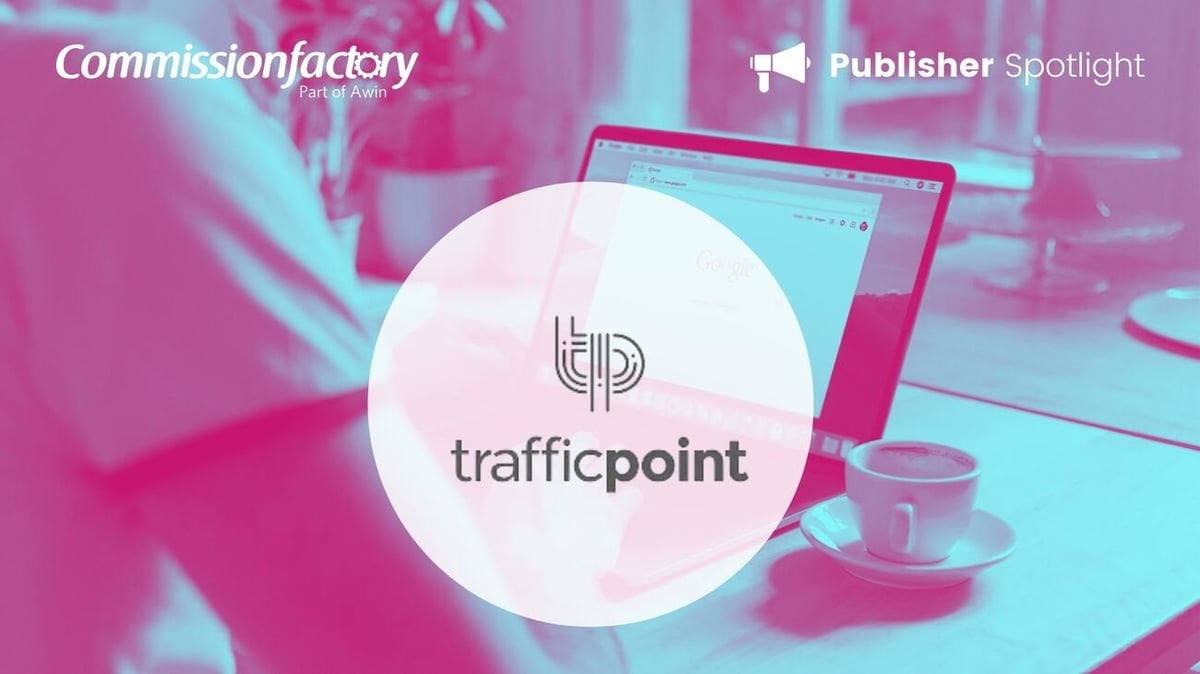In this month's Publisher Spotlight, we speak to Trafficpoint about how they inform consumers decisions and through SEO drive conversions for advertisers and what gives them the competitive edge.
Can you tell us about Trafficpoint?
Consumers today are faced with too many choices and too much data to digest. Trafficpoint tackles this challenge by providing users with well-researched and hyper-relevant information. Trafficpoint operates as a network of comparison sites across 40+ industries including business to business (B2B), business to consumer (B2C), finance and gaming to provide users with the confidence and knowledge to make informed purchasing decisions.
Traffic Point utilise SEO to aim for the highest positions across search by delivering relevant and engaging content for the consumer, this has resulted in higher intent traffic and conversion rates.
What gives Trafficpoint the competitive edge within the affiliate space?
We have developed an algorithm that helps us to better understand what users want and need to make their life easier and make smarter shopping decisions. With almost ten years of experience, we have acquired the knowledge that allows getting the most targeted and high-intent traffic out there and with the additional help of SEO, we are able to utilise this to focus on the users intern and enhance the time they spend on the site and more.
What challenges do you face within search engine optimisation (SEO) when going after highly competitive keywords?
When you look at the market in general, you can see that the top competitors are mostly based on who was there first. It’s not as easy to gain the momentum to overtake a niche site established before we entered the market, that already has good links and a high volume of traffic. Luckily, we’ve developed techniques for accelerating hyper-growth for our business partners while at the same time directing consumers to the products and solutions that meet their needs.
Can you explain what Google’s new core web vitals update is and how it impacts the industry?
Google’s core web vitals are all about the site's speed and is well-aligned with the type of user experience that Google is trying to provide for the end-user. To put it simply, core web vitals can be divided into three components:
- First Input Delay (FID) - measures how fast the parameters respond to interactivity by the user -- ideally, less than 100 milliseconds.
- Largest Contentful Paint (LCP) - measures the amount of time it takes for the website to load -- ideally, less than 2.5 seconds.
- Cumulative Layout Shift (CLS) - checks site for layout shifts (such as buttons, font, etc.) after the page has loaded to ensure the user can successfully interact with the site as intended -- best if measured as less than 0.1.
The idea is that when all three of these factors are measured and goals are met, the website visitor will have a better user experience. Another metric that Google will probably consider in the future is time to first byte. Time to first byte is all about the time it takes for the page to upload the components. So, until it begins to load, Google cannot see the page, and even worse - the user cannot see the page or all its components. Therefore, it’s a really key factor and so it will be interesting to see how it affects the industry. The last time there was a similar update (Mobilegeddon), it took some time before it transitioned onto Google and how it truly affected the industry.
The website or the site’s dev teams need to sit and understand the issues which make the pages on the site load slower. As a site owner/SEO/Web developer you will need to understand what the issues are you’ll see in the site and how should you fix them.
The impact on any industry - as Google mentioned - the sites that will be ready on time would earn with positions in the SERP. As our sites become more optimized to be in line with Google updates- many people working with us will be able to see more traffic to their site and more sales.
What are the benefits of advertisers working with Trafficpoint?
Our in-house technology platform leverages proprietary analytics tools, advanced tracking capabilities, and optimization algorithms to connect consumers with advertisers and we are already doing so with industry-leading brands such as Emma Sleep, Sleeping Duck and Noa Home.
We specialize in high-intent search traffic, delivering premium users, brand awareness, and ROI. We take pride in supporting our partners’ growth plans and only bid on non-branded industry keywords. We also have a longstanding relationship with Google and are regarded as a Tier 1 Advertiser for EMEA.
Trafficpoint operates mostly with advertisers on a CPA and performance-based model, however, we are also open to PPC if preferred.
Finally, Trafficpoint would not be where the company is today without the people behind it. Our team has a very hands-on approach and pushes for win-win situations. We focus on building long-term relationships with our partners and provide the highest levels of customer service.

As a leader in SEO, have you seen much change in how consumers are searching for brands and products?
People today know more about what they're searching for online. They are performing more research before they are ready to go ahead and invest in a product or service. Fortunately for us, users who visit our sites know that we only feature products that we actually believe in. We're working with brands that we know will provide a great consumer experience in terms of both the product itself as well as customer support.
Especially when starting out, it’s important to know exactly what people are searching for in terms of specific brands and types of products. Furthermore, we realise that users want to enjoy visiting a website so that they’ll return to make more purchases in the future.
How are you adapting to these changes?
The content that we feature on our sites is very explanatory to users so that they can understand our recommendations and feel confident in their decisions.
What are your plans for the future in Australia?
We operate across over 40 different markets, such as the USA, Canada and several European countries. We are currently running with three different product types for the Australian market. We are planning to expand to as many niches as possible within Australia throughout 2021 as we see great potential in this market.
What are your plans for expansion in SEA?
As with Australia, we are planning to launch new partnerships, although that will start later this year towards Q4.
For advertisers with a programme, speak to your Commission Factory contact for more information or invite Trafficpoint in the affiliate directory.



